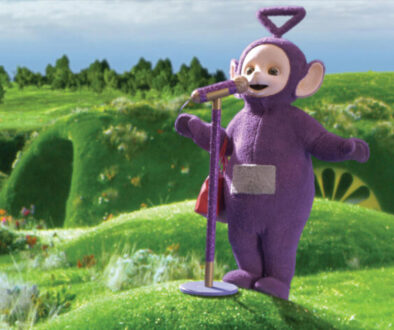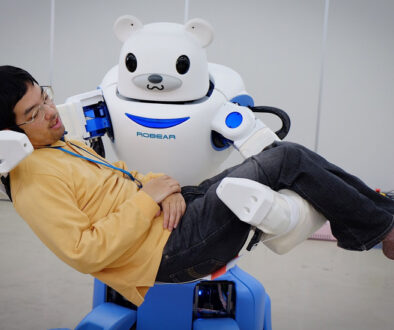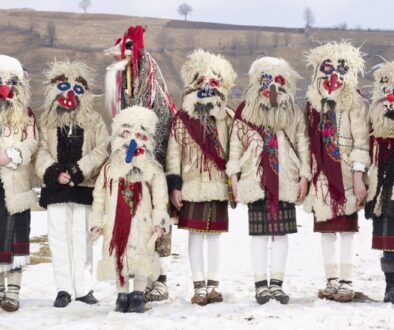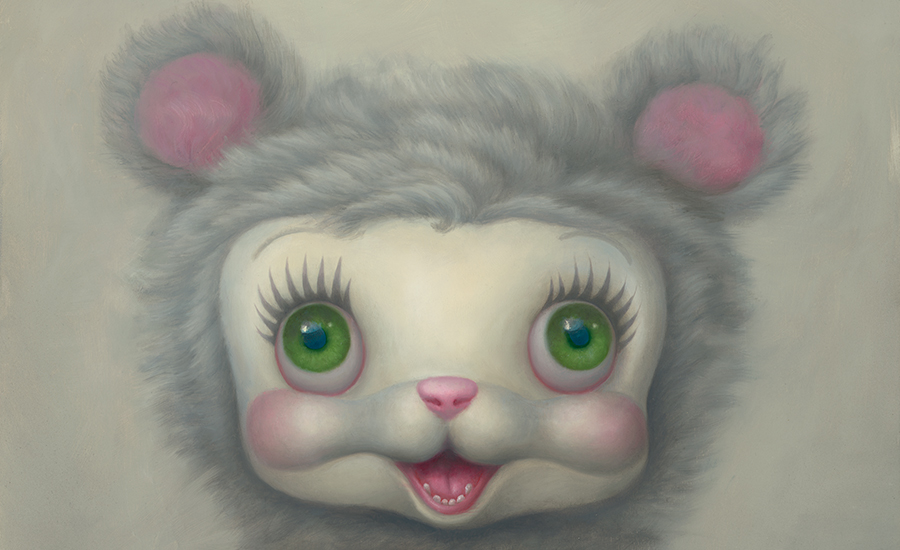
ESSAY/
Kirsten Anderson:
NOT JUST A CONTEMPORARY PHENOMENON
Kirsten Anderson has been the owner of Roq La Rue Gallery in Seattle, WA since 1998 – one of the pioneering galleries to pave the way for Pop Surrealism. She compiled and edited Pop Surrealism published by Last Gasp Books, writes for numerous publications about countercultural art, including Hi Fructose Magazine.
In this essay, she reflects on the emergence of simplified yet graphically bold images in art and makes her point about how important it is to design characters with an aura of empathy.
The use of the graphic image as conduit to communicate desire is as old as humanity itself. Ancient cave artists created vast paintings of undulating herds, each animal stripped down to its most basic shape, not due to lack of skill, but rather because the artist seemingly sought instead to emphasize the purest physical ‘essence’ of each creature. They focused on exaggerating the rounded flanks of a bull or the strong curved neck of a horse, and rendered them in the simple, clean lines. These animals, while greatly distorted, are immediately recognizable. The artists often inserted themselves within the scene (usually depicting themselves as rangy stick figures) as if to magically force the hand of fate to recreate in reality that which was depicted by the artist – his desires (such as a successful hunt) to be manifested in the real world by the physical action of applying it ritually, and permanently, to a canvas.
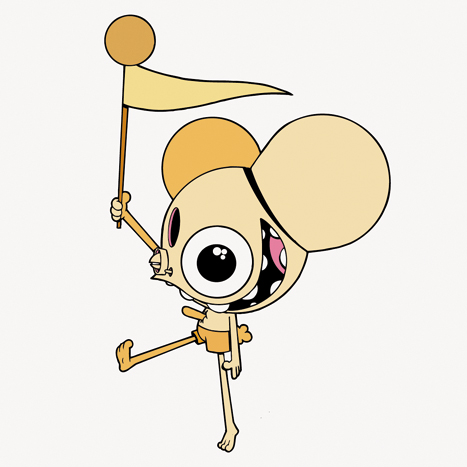 James Marshall
James Marshall
Since then artmaking has progressed through many forms, most recently culminating in several decades of intellectually savvy abstract and conceptual art dominating the forefront of the twentieth-century fine art world. However, the tidal wave-like resurgence of figurative art in multiple forms at the beginning of the twenty-first century speaks to the intrinsic desire of humans to see ‘people doing stuff’. Seemingly a simplistic desire, our need to relate to others is so strong that, like our ancestors, we are able to visually grasp and empathize with a character created from the fewest strokes of a brush (as this book attests).
The current fascination among contemporary artists for the use of simplified yet graphically bold images comes from multiple influences. Most predominant, however, is the overwhelming prevalence of the cartoon. Cartoon and comic book imagery inundates our culture to the extent that it is almost impossible to imagine our lives without them. Being raised on a steady diet of Saturday morning cartoon extravaganzas, reading cheaply printed comics of all stripes, and playing video games (not to mention the ubiquity of Disney characters and Hello Kitty) is an ingrained part of the shared cultural experience. Or certainly, at least, for any child born in North America or Europe in the course of the past fifty years, and probably almost everywhere else in the world not under a dictator’s thumb or in the middle of a jungle. The relate-ability of the cartoon is such that a quick perusal of the internet or even a poll among friends reveals that not only is there often a deep emotional resonance to cartoon characters, but that some people develop crushes on them or wish to actually be one themselves. And not just little kids (but that is another essay).
The dynamic quality of the cartoon image in its simplicity is its most attractive attribute, and a lot of information can be packed in a simple-seeming image if it is done right. Advertisers create recognizable icons meant to encapsulate the whole raison d’être of a business (such as a dead cross-eyed cockroach for an exterminator, or a happy faced clown as a symbol meant to evoke familiarity and fun for a fast food chain). The prevalent use of such charged, easily accessible imagery meant to pander to desires, evoke longing, and create memorability is not lost on today’s artists, either, and indeed many have re-appropriated such ideology by creating their own ‘brand imagery’ by use of a character that reoccurs in multiple artworks.
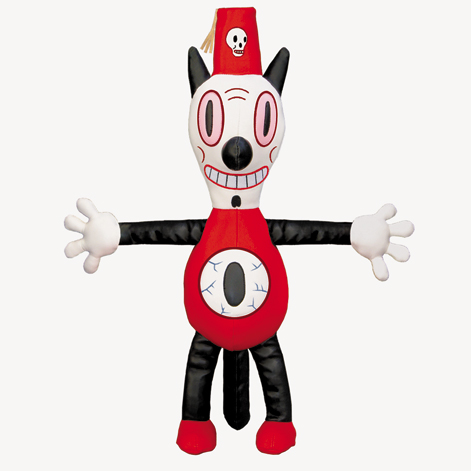 Gary Baseman
Gary Baseman
A dominant motif in some contemporary art, most particularly in a certain sub-genre of figurative art known as Pop Surrealism, the emphasis of a single character as a relatable protagonist set in a familiar yet unreal fantasy world. This concept, both on its own and also expanded into a more evolved narrative, can be found in the works of artists like Gary Baseman with his ‘Toby’ and ‘Chou Chou’ characters, Tim Biskup’s ‘Helper’, Mark Ryden’s ‘Bee’, and Dalek’s (aka James Marshall’s) ‘Space Monkeys’. (The same ‘brand imagery’ concept also exists in the street art movement – see Shepard Fairey, Banksy – and also in the work of contemporary artists such as Takashi Murakami with his smiling flower faces, and the belligerent little girls of Nara.)
When ruminating on this type of imagery, once past the initial visual punch, one of two overarching themes generally come to light – first, the timeless longing to be connected to other individuals or groups, and second, the desire to be connected to the spiritual. This duality can be seen by contrasting the works of two contemporary artists like Gary Baseman and Mark Ryden. Baseman’s commercially friendly and hyper-cartoonish, baby faced characters represent simplistic type character traits and a good-natured if tragic pathos. The Everyman character of Baseman’s awkward and gawk-eyed ‘Toby’ or the infantilized ‘Chou Chou’ are placed in situation after situation, in carnally lascivious paintings or uncomfortably imposed into photographs depicting an innocent wholesome nostalgia. It is easy to understand the base-level desires that drive humanity (love, lust, and friendship) in Baseman’s paintings, even as the somewhat amorphous images are rendered with a purposefully child-like look.
Baseman, a proponent of the term ‘Pervasive Art’, takes his easily identifiable characters off the canvas and into our world in the forms of three-dimensional toys and tchotches, and he purposefully uses character design as the vehicle to send his artistic message in a multiple of mediums (and thereby occasionally making his object that represents desire into an object of desire).
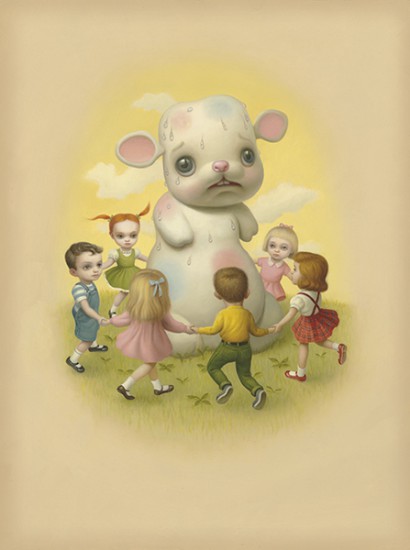 Mark Ryden
Mark Ryden
Mark Ryden on the other hand, works with a more refined series of iconic figures closely aligned with archetypal imagery, and his theme seems to be less about a desire to be connected with other people than a desire to be connected with the sublime. His trademark image, the bee, is traditionally representative symbolically of a direct line to the spiritual world. His concerns tend to be more with the transcendent, and his characters are actually infused with mystical potency once their occult connotations are realized. That said, Ryden is also aware of the power of middle-class childhood nostalgia and the power of the cartoon, and many of his paintings contain references to those things. This brings the nebulous back to earth, makes it more relatable. A common ‘character’ is the cartoony big-eyed girl, ripped from 1960s mass-produced kitsch and flipped into an enigmatic allegorical creature, but she is still the character we relate to in his paintings, the anchoring image in a surrealistic landscape. She is such a strong image that she exists by herself in many paintings, her ambiguous stare at the viewer inviting a multitude of interpretations.
In either example, characters are presented as figurative images that confront us with their inherent iconic force and thus rouse our desire or fear. Like the paintings of the ancient cave artists, they are composed of singular imagery distilled down to its more basic outlines, but now transformed into something different for modern times, a more complex and unique visual vocabulary suited to communicating with a fast-paced, concept-driven culture of the twenty-first century.
Originally published in Prepare for Pictopia, 2009
